The Environment
Our logo contains a green chair in recognition that trees are fundamental to the global ecosystem and forests are vital to the health and prosperity of our species. If we nurture our forests and protect them from pollution and excess exploitation they will provide a constant supply of renewable healthy raw materials.
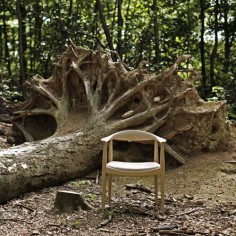
Wood is an amazing material to behold and touch with endless possibilities for shaping and treatment. Having great respect for nature and the environment is fundamental to the Company. We understand that we rely on the supply of wood from the trees planted by our ancestors and that our descendants will rely on the trees that are planted today. All of the furniture supplied by ourselves is produced from sustainable resources – our green chair is your guarantee.
Species of wood
Oak – Quercus
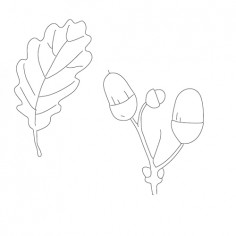 Oaks are a large group of strong and widely spread bushes and trees that grow up to 40 meters tall. There are about 600 species of oak native to the Northern Hemisphere, and they are keystone species in many habitats. Due to its strength and resistanceto biological breakdown oaks have been a significant source of building materials as well as food stocks for humans since prehistory, and remain a significant resource of many modern economies. Many fine wines and whiskeys are matured in oak caskets, and many great oak ships has crossed the oceans. Oak has a characteristic grain pattern and patinates beautifully.
Oaks are a large group of strong and widely spread bushes and trees that grow up to 40 meters tall. There are about 600 species of oak native to the Northern Hemisphere, and they are keystone species in many habitats. Due to its strength and resistanceto biological breakdown oaks have been a significant source of building materials as well as food stocks for humans since prehistory, and remain a significant resource of many modern economies. Many fine wines and whiskeys are matured in oak caskets, and many great oak ships has crossed the oceans. Oak has a characteristic grain pattern and patinates beautifully.Ash – Fraxinus
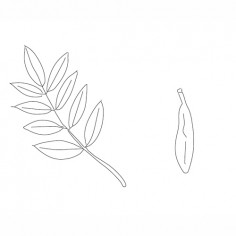 Ash is a small group of about 50 species of medium to large trees widely spread across Europe, South East Asia and North America. It has an open growth and is mostly found in mixed forests. They get up to 35 meters tall. Ash is a bright wood with clearly pronounced grain patterns. The ash wood is very strong and rigid, and it is commonly used for making tools like hammers, axes or shovels. It is very bendable and is excellent for steam bending and pre-compression.
Ash is a small group of about 50 species of medium to large trees widely spread across Europe, South East Asia and North America. It has an open growth and is mostly found in mixed forests. They get up to 35 meters tall. Ash is a bright wood with clearly pronounced grain patterns. The ash wood is very strong and rigid, and it is commonly used for making tools like hammers, axes or shovels. It is very bendable and is excellent for steam bending and pre-compression.New species have been specifically bred to be resistant to the ash dieback that has become an increasing problem in North Europe.
Maple – Acer
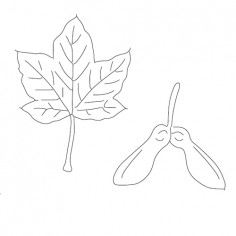 Maples are a diverse and versatile group of trees beloved especially for the colours of their autumn leaves. They are commonly recognisable by the whirlybird fruits. There are almost 200 species of maples ranging from bushes to trees that grow up to 45 meters tall. They thrive in the high altitudes of the Himalayas, to
Maples are a diverse and versatile group of trees beloved especially for the colours of their autumn leaves. They are commonly recognisable by the whirlybird fruits. There are almost 200 species of maples ranging from bushes to trees that grow up to 45 meters tall. They thrive in the high altitudes of the Himalayas, tothe rainforests of South East Asia, to rocky cliffs in the Mediterranean and the edge of swamps in North America. The maple wood is delicate and bright with subtle grain patterns. It is a tone wood widely used in the making of string instruments and drums. Maple is hard and dense and is excellent for furniture making.
Cherry – Prunus Avium
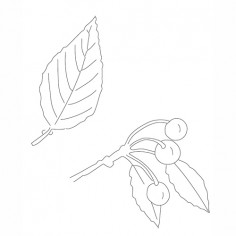 Cherry is a member of the Prunus family and is related to plums, peaches, nectarines, apricots and almonds. Cherry is a fast growing tree. Each branch can grow more than one meter every year. However, cherries seldom get taller than 30 meters.
Cherry is a member of the Prunus family and is related to plums, peaches, nectarines, apricots and almonds. Cherry is a fast growing tree. Each branch can grow more than one meter every year. However, cherries seldom get taller than 30 meters.Cherry is a tone wood and is used for making instruments. It also has a sweat flavour that is utilised in wine and licqeur making. Cherry wood is deep redish brown with distinguished grains and colour nuances that vary significantly from tree to tree
Wood Finishes
Soap finish
A soap finish is suitable for all blonde timbers and maintains the original natural colour of the wood. With occasional cleaning soap treated furniture will look better and better over time. Soap is the easiest surface treatment to maintain and has several advantages over alternative finishes.1. Soap is a natural product and maintains the timber by feeding lanolin through to the underlying surface protecting the wood from drying out.
2. As it is an alkaline it forms a protective barrier on the surface of the timber that repels fatty acids such as perspiration or food stains.
3. Soap maintains the natural wood colour with it’s gentle bleaching effect over time.
The disadvantage of a soap finish is that as a biological barrier it does break down over time and the furniture has to be cleaned periodically.
Oil finishAn oil finish is usually applied to enhance the colour of the wood to bring out the hidden natural beauty of the timber.
While soap treatment is ideal for all the blond timbers such as beech, ash and maple – hard woods like American Cherry and Walnut require a surface treatment to enhance the appearance of the natural wood colour.
In addition to bringing out the colour hidden within the wood an oil finish has the advantage of maintaining the surface for a longer period of time before it requires cleaning.
This can be a disadvantage on blond woods as the oil is a natural solvent and marks such as shoe polish can soak through the oil and sit on the timber itself making them harder to remove.
White pigmented oil gives has a similar appearance to a soaped finish with a higher resistance to marks and therefore requires less frequent cleaning. We would only recommend the use of a white pigmented oil over a soap finish in areas of high traffic where there are large numbers handling of the furniture such as a showroom or gallery.
Lacquer
A surface lacquer also enhances the colour of the wood and seals the timber to achieve a stain resistant wipe clean surface. For this reason all veneered surfaces on tables or cabinets are usually lacquered to stop the veneer from lifting. We do not recommend that lacquer is applied to solid wood furniture for domestic purposes but it can be specified for for use in rented accommodation or in use in commercial environments such as restaurants and offices.
Covers
Halingdal fabric colours
Designer : Nanna Ditzel
Composition : 70% New wool.
30% Viscose.
Weight : 795 g/lin.m
Width : 130 cm.
Durability : 100.000 Martindale
Pilling: 3. Lightfastness: 6Elmosoft Leather
Thickness : 1,0-1,3 mm
Lightfastness : 6 ISO 105-B02
Dry-rubbing : 2000/4 ISO 11640
Wet-rubbing : 80/4 ISO 11640
Sweat : 50/4 ISO 11640
Tear-strength : 20 N/mm DIN 53329
Finish adhesion : 2,0 N/cm ISO 11644
Flame resistance: BS 5852 CRIB 5Produced from the top selection of the most desirable Scandinavian hides, this full top grain, aniline dyed, chrome-free leather is produced in Sweden, known for its remarkable attention to the care and processing of leather. Elmo Soft is supple with a light pebbled grain and almost no visible natural marks. Protected with an organic, contract-grade finish that withstands heat and fire testing, this leather is among the most natural and durable available.
Elegance Leather
Thickness : 1,0-1,3 mm
Lightfastness : 6 ISO 105-B02
Dry-rubbing : 2000/4 ISO 11640
Wet-rubbing : 80/4 ISO 11640
Sweat : 50/4 ISO 11640
Tear-strength : 20 N/mm DIN 53329
Finish adhesion : 2,0 N/cm ISO 11644
Flame resistance: BS 5852 CRIB 5Elegance is an exquisite leather of the finest quality European oxhide. It has an exclusive and natural look and is soft and pleasant to the touch. Elegance is aniline leather and is chrome tanned but then subsequently vegetable tanned, which gives the leather greater firmness. This type of leather has a natural and raw surface, allowing the leather to breathe and offers excellent sitting comfort as well as a feeling of exclusivity. The leather is full grain, which means that its natural surface structure has been preserved and all natural markings are visible. Natural markings are the hallmarks of the animal’s active life and give the piece of furniture a unique sense of character. Elegance leather varies in colour from hide to hide and acquires a beautiful, lighter patina with use and exposure to sunlight.